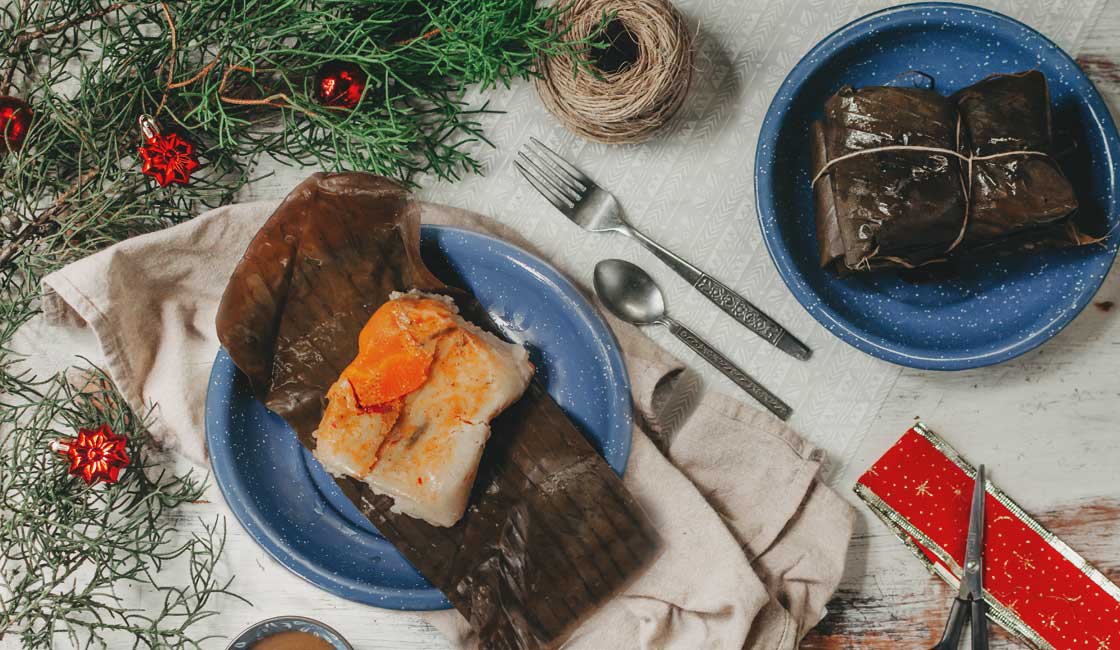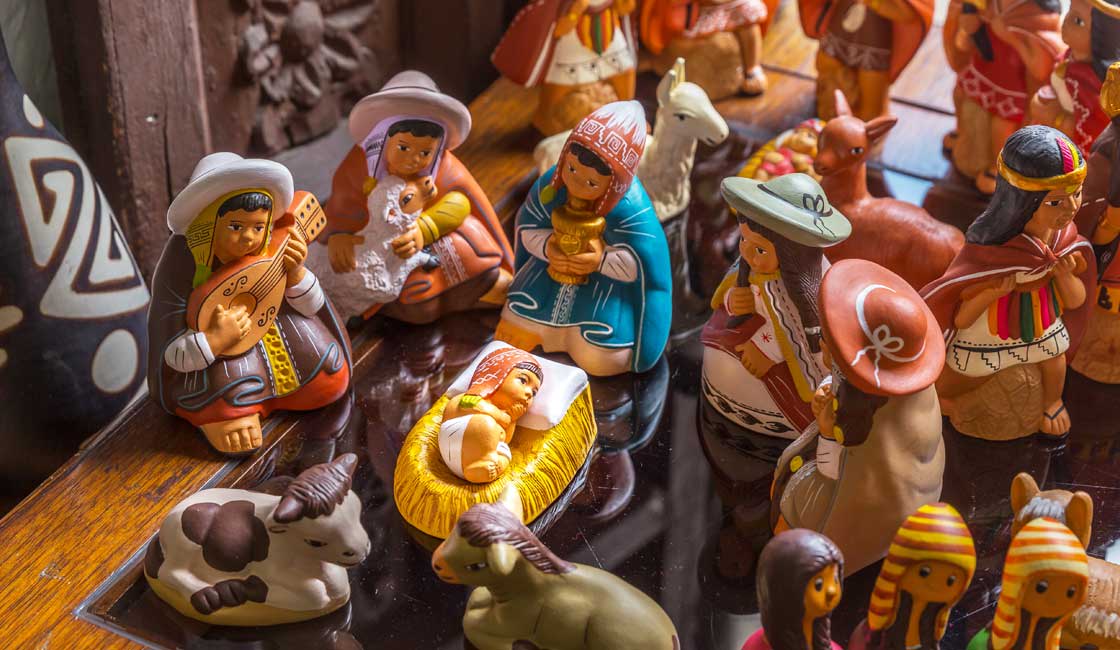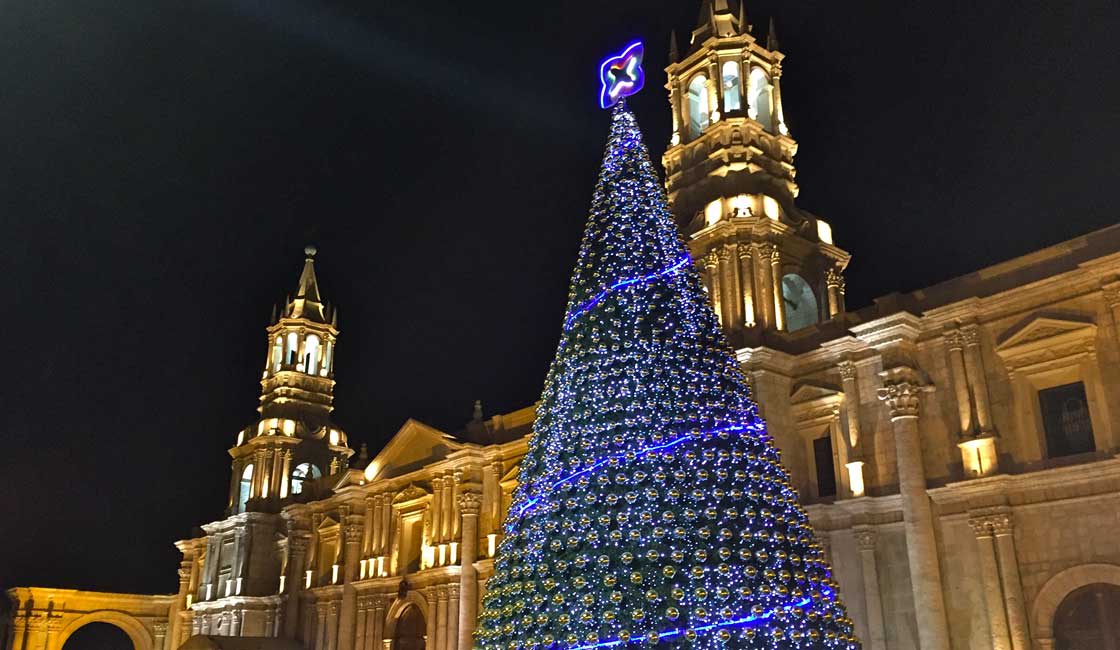
Christmas in Peru is a very special time of year in the largely Roman Catholic country, full of cozy traditions and religious celebrations with friends and family. Some celebrations are very reminiscent of those in other countries such as North America and Europe, however the holiday certainly gets a unique Peruvian touch with many traditions entirely its own. From regional dishes to decorations to city-by-city events, there is also a huge variation in how different parts of the South American country celebrate. It may not be the white Christmas we’re used to, but a Christmas in Peru is one you definitely won’t forget.
For those planning on spending Christmas in Peru (or for those who just want to know a little more about the culture), read on for the traditions you can look forward to!
Most North Americans and Europeans celebrate Christmas on the morning of December 25th, but in Peru the main events begin on December 24th (similar to other Latin American countries such as Venezuela and Bolivia). Christmas Eve, also known in Peru as Noche Buena (Good Night), is when the main religious traditions take place.
During the day, families usually come together to begin the preparations for the evening when the official traditions begin. Cities such as Cusco host markets in the main squares where you can buy religious handicrafts and items for nativity scenes.
The evening begins around 10pm with a special mass at church: the misa de gallo (Rooster Mass). Devoted Catholic families attend the service, returning home around midnight. At midnight, Christmas has officially begun and so do the festivities.
Christmas dinner in Peru starts at midnight, just as fireworks begin to explode throughout the country. Adults toast with champagne, while children sip on homemade hot chocolate, just before digging into a feast of roast turkey and exchanging presents.
After dinner and the tearing open of gifts, sleepy children are put to bed- but the night is just beginning for the adults. Family house parties continue well into the night, usually leading to a lazy Christmas morning in bed.

Tamales
For most families, Christmas dinner in Peru is usually a large roast turkey similar to traditions in North America and Europe, or perhaps a lechon (roast suckling pig).
However, like every other holiday in Peru, there are many regional variations in typical food between the cities, coast, highlands and jungle, and Christmas is no exception.
Smaller coastal communities may swap fish for the turkey. In the Andean highlands, a classic pachamanca of varied meats is more common. In the jungle, families often roast a wild chicken.
There are a few traditional foods you’ll find all around the country though. Applesauce and homemade tamales are on the sides of most plates. Paneton, the Italian sweet bread filled with raisins and candied fruits, is a Christmas staple throughout the holidays in Peru. Every store fills their shelves with Paneton the month before Christmas, and every house if full of it during the holiday gatherings.
Paneton is always eaten with hot chocolate in Peru, a favorite Christmas drink no matter how hot it is outside. It is often homemade with melted dark chocolate and cinnamon, rich and delicious. Chocolatadas are special get-togethers just for drinking hot chocolate and eating Paneton during the holidays, and are hosted by friends or by Churches as a gift to poorer communities.

The Nativity Scene
Peru has adopted the North American classic of the Christmas tree (always fake though- pine trees don’t grow in most of Peru!), but the most traditional Christmas decoration in Peruvian households is the nativity scene. Lovingly arranging and displaying an elaborate nativity scene is perhaps the most important Christmas custom in Peru.
Peruvian living rooms center around the nativity scene, sometimes some large they take over the entire room. Some Peruvians put their own twist on the classic, replacing the biblical animals of donkeys, oxen and camels with the more endemic llamas and alpacas.
Of the entire scene, the most important part is the manger with the baby Jesus. The nativity scene is set up earlier in the month with the rest of the Christmas decorations, but the manger remains empty until midnight on Noche Buena. After the stroke of midnight, when the champagne is popped and the fireworks light up the city, one special tradition must take place before the food and gifts are dug into. One member of the family, usually the youngest child, is chosen to place the baby Jesus in the manger to represent the birth. After this custom, Christmas has officially begun!

Christmas Tree if front of the Cathedral in Arequipa
For those spending Christmas in Peru, you’ll be able to see many familiar traditions that are similar to those in North America and Europe. Christmas trees stand in city squares, department stores are covered in tinsel and lights, Santa decorations cover the cities and Christmas music plays throughout.
During the day on Christmas Eve, take advantage of the various festivals that will give you a glimpse of Peruvian customs. Those in Cusco won’t want to miss the annual Santuranticuy (literally “the selling of Saints”). This traditional Christmas market brings artisans from across the country to sell handcrafted images of the nativity, saints and other religious representations. You’ll see families in the square, traditional food and snacks for sale, and have a chance to buy souvenirs that represent your Christmas in Peru.
The 10pm Christmas Eve masses are open to all, and are worth checking out even if you’re not the most religious so you can see the Noche Buena custom for yourself.
On Christmas Eve, several places in big cities like Lima and Cusco remain open throughout the night for foreigners. You can go out for a classic Christmas dinner at various restaurants, and adults can dance late into the night like locals at bars and clubs.
Keep in mind that December 25th is a national holiday in Peru, so many businesses and services will close around midday on the 24th and will not reopen until December 26th.
Most importantly, make sure you know how to say “Merry Christmas!” to all your new friends in Peru. “Feliz Navidad!” is “Merry Christmas!” in Spanish, and how everyone will greet each other during the holidays.
While Rainforest Cruises aim to provide accurate and up-to-date information, we make no representations as to the accuracy or completeness of any information herein or found by following any link on this site. Rainforest Cruises cannot and will not accept responsibility for any omissions or inaccuracies, or for any consequences arising therefrom, including any losses, injuries, or damages resulting from the display or use of this information.




